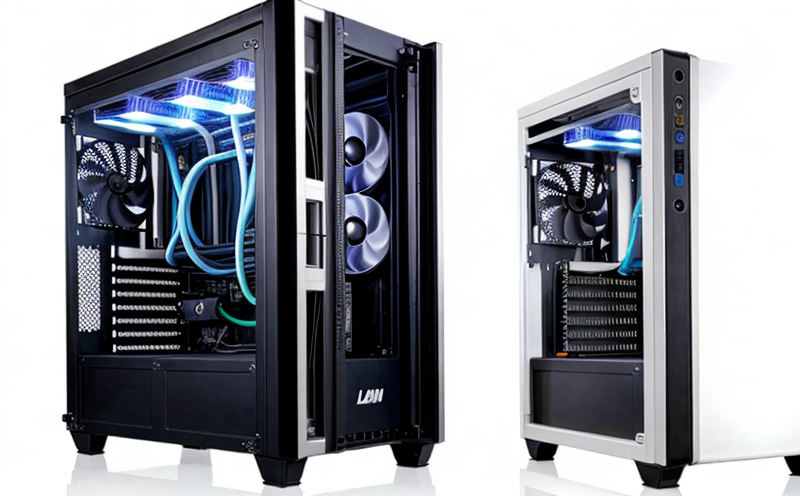ISO 13253 Thermal Performance of Packaged Units
The ISO 13253 standard provides a method to determine the thermal performance of packaged air conditioning and heating units. This test is critical for quality assurance in HVAC equipment, ensuring that these systems meet the specified energy efficiency requirements before they are installed or sold.
Understanding the importance of this testing involves recognizing how it impacts various stakeholders within the industry. Quality managers rely on accurate results to maintain a high standard of compliance and satisfaction among customers. Compliance officers use these tests as an essential tool for ensuring that all HVAC equipment meets legal and regulatory standards set by international bodies such as ISO.
R&D engineers can leverage this testing method during product development stages, validating design improvements through empirical data. For procurement teams, having reliable thermal performance metrics helps in selecting suppliers who adhere to strict quality control procedures.
The process begins with preparing the packaged unit according to specified guidelines outlined in ISO 13253. This includes ensuring that all components are correctly assembled and functioning properly before testing can commence.
Once prepared, the test setup involves placing the unit into a climatic chamber designed specifically for this type of evaluation. The chamber allows controlled temperature changes to simulate real-world conditions under which the HVAC equipment will operate.
Data collection occurs throughout various stages of operation, including idle mode and full load operation. Various parameters are measured such as airflow rates, air distribution patterns, energy consumption levels, and overall system efficiency factors.
After completing all necessary measurements, analysts compile the collected data into comprehensive reports that detail how well each unit performed relative to its rated capacity as defined by ISO 13253. These reports serve multiple purposes including internal quality assurance checks, external audits conducted by regulatory agencies, and providing evidence during contract negotiations.
By adhering strictly to the procedures prescribed in ISO 13253, laboratories ensure consistent and accurate results across different batches of equipment being tested. This consistency builds trust among all parties involved—from manufacturers looking to prove their products meet stringent standards—to end-users seeking dependable heating and cooling solutions.
Given the complexity of HVAC systems and their role in modern buildings, it is essential that rigorous testing methods like those provided by ISO 13253 are employed. Not only do these tests help manufacturers improve product quality but also contribute significantly towards reducing energy consumption and promoting sustainable practices within the industry.
- Ensures compliance with international standards
- Improves product quality through rigorous testing
- Promotes sustainable HVAC solutions
- Reduces energy consumption in buildings
Scope and Methodology
The scope of ISO 13253 covers the determination of thermal performance of packaged air conditioning and heating units. This includes both cooling mode performance and heating mode performance.
In terms of methodology, the standard specifies a procedure for testing these systems in a climatic chamber under controlled conditions. The test setup involves placing the unit into the chamber where it is subjected to various temperature changes designed to mimic real-world operating environments.
During this process, key performance indicators are measured including airflow rates, air distribution patterns, energy consumption levels, and overall system efficiency factors. Additionally, tests may also include measurements related to sound level outputs from fans or compressors within the unit.
The collected data is then analyzed using statistical methods prescribed by ISO 13253 to derive an average performance value for each parameter tested. This allows for a fair comparison between different units based on their thermal efficiency ratings.
It’s important to note that while the standard provides detailed instructions, it does not dictate specific values or ranges that constitute acceptable performance levels. Instead, compliance is determined by comparing actual measured results against manufacturer specifications provided at time of purchase.
Quality and Reliability Assurance
Ensuring quality and reliability in HVAC equipment testing is paramount for maintaining industry standards and customer satisfaction. At our laboratory, we employ stringent measures to guarantee accurate results every time. Our team of skilled technicians follows strict protocols outlined in ISO 13253, ensuring that each step from preparation through analysis adheres precisely to the prescribed guidelines.
Before any testing can begin, equipment must be thoroughly prepared according to specified criteria. This includes cleaning all surfaces, checking connections for leaks or blockages, and verifying that all components are functioning correctly. Once ready, units undergo a series of tests designed to assess their thermal performance under different operating conditions.
Throughout these tests, our state-of-the-art instrumentation continuously monitors various parameters such as airflow rates, air distribution patterns, energy consumption levels, and overall system efficiency factors. All readings are recorded meticulously for later analysis.
In addition to the technical aspects of testing, we also emphasize thorough documentation practices. Comprehensive reports detailing each unit’s performance results are generated using software compliant with ISO standards. These documents not only serve internal quality assurance purposes but can also be used externally during audits or negotiations between parties involved in a project.





